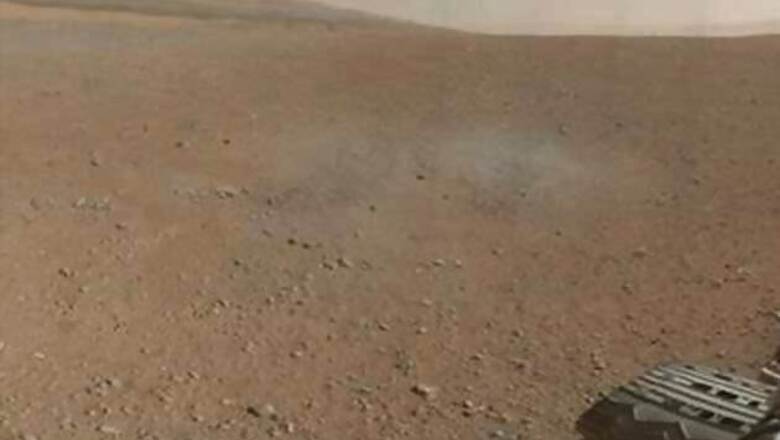
views
Washington: A NASA spacecraft is keeping tabs on a vast dust storm on Mars that has spawned changes in the Martian atmosphere felt by Curiosity rover on the Red planet's surface. The Martian dust storm was first spotted by NASA's Mars Reconnaissance Orbiter (MRO) on November 10 and has been tracked ever since, the space agency said.
Using the orbiter's Mars Colour Imager, Bruce Cantor of Malin Space Science Systems, began observing the storm and subsequently reported it to the team operating NASA's Mars Exploration Rover Opportunity. The storm came no closer than about 1,347 kilometres from Opportunity, resulting in only a slight drop in atmospheric clarity over that rover, which does not have a weather station.
Halfway around the planet from Opportunity, the NASA Mars rover Curiosity's weather station has detected atmospheric changes related to the storm. Sensors on the Rover Environmental Monitoring Station (REMS), which was provided for Curiosity by Spain, have measured decreased air pressure and a slight rise in overnight low temperature.
"This is now a regional dust storm. It has covered a fairly extensive region with its dust haze, and it is in a part of the planet where some regional storms in the past have grown into global dust hazes," said Rich Zurek, chief Mars scientist at NASA's Jet Propulsion Laboratory, Pasadena.
"For the first time since the Viking missions of the 1970s, we are studying a regional dust storm both from orbit and with a weather station on the surface," Zurek said. Curiosity's equatorial location and the sensors on REMS, together with the daily global coverage provided by the Mars Reconnaissance Orbiter, provide new advantages compared with what Viking offered with its combination of orbiters and landers.
Each Martian year lasts about two Earth years. Regional dust storms expanded and affected vast areas of Mars in 2001 and 2007, but not between those years nor since 2007. "One thing we want to learn is why do some Martian dust storms get to this size and stop growing, while others this size keep growing and go global," Zurek said.
From decades of observing Mars, scientists know there is a seasonal pattern to the largest Martian dust-storm events. The dust-storm season began just a few weeks ago, with the start of southern-hemisphere spring. The Mars Climate Sounder instrument on the Mars Reconnaissance Orbiter detected a warming of the atmosphere at about 25 kilometres above the storm. Since then, the atmosphere in the region has warmed by about 25 degrees Celsius.
This is due to the dust absorbing sunlight at that height, so it indicates the dust is being lofted well above the surface and the winds are starting to create a dust haze over a broad region.
















Comments
0 comment